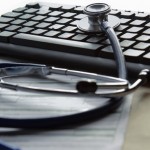5 ways ICD-10 will improve care
Although most physicians and hospitals have become well-versed on all aspects of ICD-9, it was implemented back in 1979 and is not up to date with essential factors like new diseases. When ICD-10 is released in 2015, there are going to be a lot of enhancements with the coding system and, ultimately, the care that providers are able to offer their patients. Although it will take a lot of training and practice for most health care providers to become fluent in the new system, the expected benefits regarding the overall quality of patient care will make the switch well worth it.
ICD-10 is set to raise the number of procedure codes from 4,000 to 72,000, while diagnosis codes will increase from 14,000 to 69,000. Although these numbers may seem intimidating at first, Sue Bowman, one of the ICD-10 cognoscenti, confirmed that the majority of practices will use only a very small portion of these codes, enhancing specificity without being impossible to use.
Here are a few ways that ICD-10 is predicted to help physicians with overall quality of their patient care.
1. Enhance specificity
According to Health Leaders Media, when ICD-9 was implemented, it was during a time when surgical language, such as laparoscopic, endoscopic or thoracoscopic, were not used, or even heard of. Bowman expressed the dire need for a new system, using the disease codes for asthma as a prime example.
"It's either intrinsic or extrinsic asthma, which doesn't match the clinical classification currently in use, that is persistent, or intermittent," Bowman said, according to the news source. She also added that there are several other types of asthma that do not have specific codes. This is particularly bad, as asthma is an increasingly common condition among patients, particularly younger children.
Another example of ICD-10-CM specificity that cannot be found in the ICD-9-CM system is fracture codes. ICD-9-CM provides a code to identify a general hip fracture, while it is often required that each event during this fracture is reported. Once ICD-10-CM codes are implemented, physicians will have access to detailed laterality and will be able to see whether or not the occurrence was initial or subsequent.
2. Prevent fraud
One major problem with ICD-9 is that hospital coders often get away with putting patients into a more severe disease or procedure category than they require. This is because codes are currently ambiguous and vague, making it easy for coders to pile together patients with the same disease, but with different needs.
With ICD-10 it will be more difficult for people to push something that is on the border of one code or another into the higher paying code. According to the American Health Information Management Association, with ICD-10 there will be less opportunity for coders to trick the system in this way. For example, ICD-10 enables coders to identify each side of the body. Bowman said that if a patient seems to have had multiple procedures on a single body part, this will point to the fact that the treatment is not working properly for him or her. Payers will have the ability to look for several encounters or treatments on the same body part.
3. Enhance public tracking
ICD-10 allows health officials to track diseases, acts of terrorism and threats that would go unnoticed with ICD-9.
More of the major public health diseases can be captured with the new system and information can be more easily observed for the top 10 causes of death and conditions linked to terrorism. Currently, ICD-9 is not equipped with the proper tools to identify or classify specific severe foodborne illnesses, such as clostridium perfringens. However, ICD-10 can easily classify these diseases and are a lot more specific about coding for conditions like HIV and pneumococcal infections, according to Health Leaders Media.
4. Allow for detailed reports on accidents
Perhaps one of the most useful improvements of ICD-10 is the details it reveals about accidents and injuries. The location they occur and what part of the body was affected help providers familiarize themselves with common dangers. The codings are so specific that there are even nine codes to explain incidents involving baby strollers. If a patient came in due to an injury from digging with a shovel or being burned while on water skis, there are specific codes just for that as well.
5. Work flawlessly with EHR systems
EHR systems have started to become widely used across the country. They speed up several aspects of a practice's workflow, increase the number of patients providers can see, reduce input errors and help to encourage interoperability. Therefore, the impact that ICD-10 has on EHR systems is important. ICD-10 will help connect all of a practice's health IT devices, ensuring that value-based purchasing metrics and meaningful use incentive programs use the same language as the EHR system.



